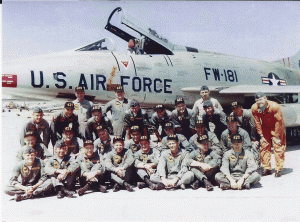16 October 1962 – In response to the failed Bay of Pigs Invasion of 1961 and the presence of American Jupiter ballistic missiles in Italy and Turkey, Soviet leader Nikita Khrushchev agreed to Cuba’s request to place nuclear missiles on the island to deter a future invasion. An agreement was reached during a secret meeting between Khrushchev and Fidel Castro in July 1962, and the construction of a number of missile launch facilities started later that summer.
Meanwhile, the 1962 United States elections were underway, and the White House had denied charges for months that it was ignoring dangerous Soviet missiles 90 miles (140 km) from Florida. The missile preparations were confirmed when an Air Force U-2 spy plane produced clear photographic evidence of medium-range (SS-4) and intermediate-range (R-14) ballistic missile facilities.
When this was reported to President John F. Kennedy he then convened a meeting of the nine members of the National Security Council and five other key advisers in a group that became known as the Executive Committee of the National Security Council (EXCOMM). After consultation with them, Kennedy ordered a naval blockade on October 22 to prevent further missiles from reaching Cuba. The US announced it would not permit offensive weapons to be delivered to Cuba and demanded that the weapons already in Cuba be dismantled and returned to the Soviet Union.
Two Operational Plans (OPLAN) were considered. OPLAN 316 envisioned a full invasion of Cuba by Army and Marine units, supported by the Navy following Air Force and naval airstrikes. Army units in the US would have had trouble fielding mechanized and logistical assets, and the US Navy could not supply enough amphibious shipping to transport even a modest armored contingent from the Army.(1)
OPLAN 312, primarily an Air Force and Navy carrier operation, was designed with enough flexibility to do anything from engaging individual missile sites to providing air support for OPLAN 316’s ground forces.[61]
The 429th TFS who were previously assigned to Incirlik AB, Turkey was sent to Seymour Johnson AB, NC loaded with MK-83’s in response to the crisis. 
After several days of tense negotiations, an agreement was reached between Kennedy and Khrushchev. Publicly, the Soviets would dismantle their offensive weapons in Cuba and return them to the Soviet Union, subject to United Nations verification, in exchange for a US public declaration and agreement to avoid invading Cuba again. Secretly, the United States agreed that it would dismantle all US-built Jupiter MRBMs, which had been deployed in Turkey against the Soviet Union; there has been debate on whether or not Italy was included in the agreement as well.
When all offensive missiles and Ilyushin Il-28 light bombers had been withdrawn from Cuba, the blockade was formally ended on November 21, 1962. (2)
Source: (1)(2) Wikipedia
